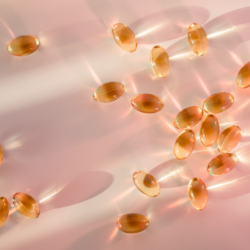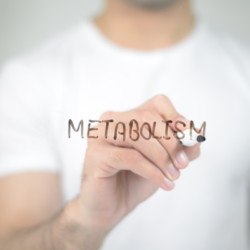Hyaluronic acid is a clear, sticky substance. It is naturally produced by the human body. Moreover, its concentration is highest in the skin, connective tissue and eyes. The main function of this polysaccharide is to retain water inside the tissues so that they can be supple and hydrated.
What is hyaluronic acid?
Hyaluronic acid or HA is a natural glycosaminoglycan found throughout the body. It is actually made up of long unbranched carbohydrates, or sugars: it is a polysaccharide. Hyaluronic acid is the main component of the epidermis. It is what gives the skin its structure, giving it a smooth and plump appearance. We talk a lot about collagen, but the star of the day is hyaluronic acid! Indeed, it is a major contributor to the success of many anti-ageing products, but we don’t know it that well. That’s why it’s time to talk about this acid and its benefits for the skin! It plays an important role in the healing process. Moreover, as its concentration decreases with age, it is interesting to integrate it into one’s daily routine to fight against the signs of ageing: wrinkles, dry areas, sagging skin…
What are the properties of hyaluronic acid?
What makes hyaluronic acid so effective? Firstly, it is capable of absorbing a thousand times its weight in water! A real hydration star! In short, it is an excellent humectant that can retain water molecules on the skin’s surface. Baby skin guaranteed! When we talk about well-hydrated skin, we are referring to skin that is full of water. Do you know about transepidermal water loss? This is actually a scientific term for the process by which water evaporates from our epidermis. When a cream or lotion prevents transepidermal water loss, it means that it allows the skin to retain all its moisture. In fact, this is precisely what HA does: it slows down the water evaporation process. In addition to being able to optimally moisturise the skin, some studies show that it plays a role in the wound healing process.
How to use hyaluronic acid?
Hyaluronic acid can be used in addition to the other products in your current toiletry kit. Here is a guide on how to incorporate hyaluronic acid into your skin care routine:
- Start by applying your hyaluronic acid serum to a wet face. You read that right! Once your skin has been cleansed, it is best not to dry it in order to take advantage of HA’s ability to retain 1000 times its weight in water. Do not dry your face after cleansing or toning. Apply your serum and without waiting for it to be absorbed, go on to the next step
- Moisturise your face with a cream enriched with hyaluronic acid or not.
- In the morning, finish with a sun protection.
Should I take a hyaluronic acid-based food supplement?
The natural aging process, as well as exposure to elements such as UV rays, smoking and pollution, can decrease the amount of water in the skin. In fact, taking hyaluronic acid supplements can prevent this decline by giving the body additional amounts to incorporate into the skin. Doses of 120-240 mg per day for at least one month have been shown to significantly increase skin hydration and reduce dry skin in adults.
Sources: https://pubmed.ncbi.nlm.nih.gov/10231509/ https://www.ncbi.nlm.nih.gov/pmc/articles/PMC3583886/ https://pubmed.ncbi.nlm.nih.gov/17173469/#:~:text=Introduction%3A%20Hyaluronic%20acid%20(hyaluronan),healing%20process%20of%20chronic%20wounds. https://pubmed.ncbi.nlm.nih.gov/18959406/ https://pubmed.ncbi.nlm.nih.gov/18391466/





